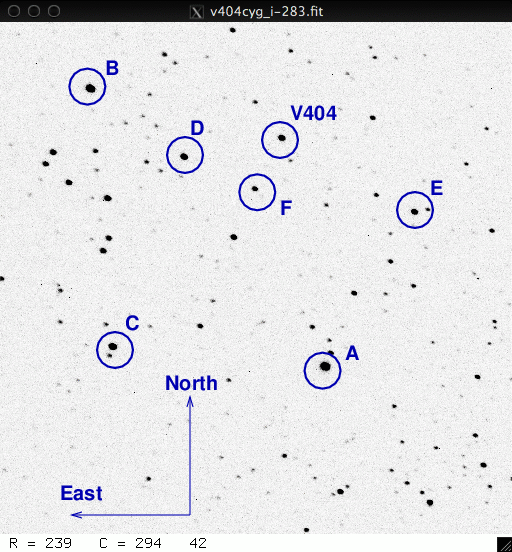
On the night of June 24/25, 2015, I observed the cataclysmic variable star V404 Cyg.
This time, I used a "B" filter, rather than the "V" or "I" filter used on earlier nights. The star was relatively constant for the first half of the night, but then returned to the wild gyrations of UT Jun 24.
The main setup was:
Notes from the night
This object, originally noted as Nova Cyg 1938, is a Low-Mass X-ray Binary (LMXB) which is thought to consist of a black hole of roughly 10 solar masses and an ordinary star of about 0.6 solar masses. A good summary can be found at AAVSO Alert Notice 520 ; one paper from many, picked at random, is Characterizing the quiescent X-ray variability of the black hole low-mass X-ray binary V404 Cyg, which suggests that a jet is responsible for most of the radiation emitted during quiescence. The binary has an orbital period of about 6.47 days.
Here's a chart of the field of V404 Cyg, which is at
RA = 20 24 03.83 Dec = +33 52 02.2 (J2000)
The chart is about 12x12 arcminutes. It is taken in I-band, so some very red stars appear much more prominent than they in most star charts.

Among the labelled stars are
B TYC 2693-1473-1 F UCAC4 620-101865
The star "F" has a B magnitude of 13.499 +/- 0.017 and a V magnitude of 12.815 +/- 0.014 according to AAVSO sequence 15094IVF, and an Ic magnitude of 11.967 +/- 0.018 according to AAVSO sequence 15088BFS,
Below is a graph showing the sky brightness as a function of time during the observing run. I probably started too early after sunset.

Below is a graph showing the FWHM as a function of time during the observing run. I didn't refocus.

Using aperture photometry with a radius of 4 pixels (radius of 5.7 arcsec), I measured the instrumental magnitudes of a number of reference stars and the target. Following the procedures outlined by Kent Honeycutt's article on inhomogeneous ensemble photometry, I used all stars available in each image to define a reference frame, and measured each star against this frame.
Sigma-vs-mag plot: V404 Cyg is the big outlier at instrumental mag 2. The other outlier, at the faint end, was caused by a cosmic ray.
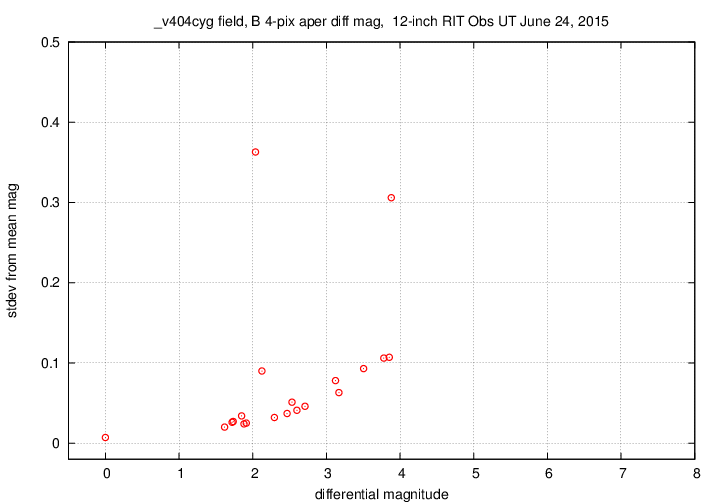
Image adjustment factor shows that clouds passed by briefly before midnight, then returned in force for much of the morning. They did disappear before dawn, though.
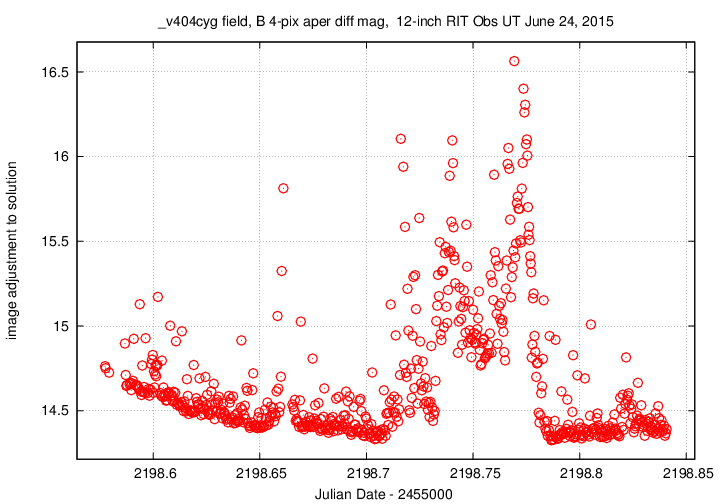
The target, shown in green, shows a crazy variation over the course of the run.
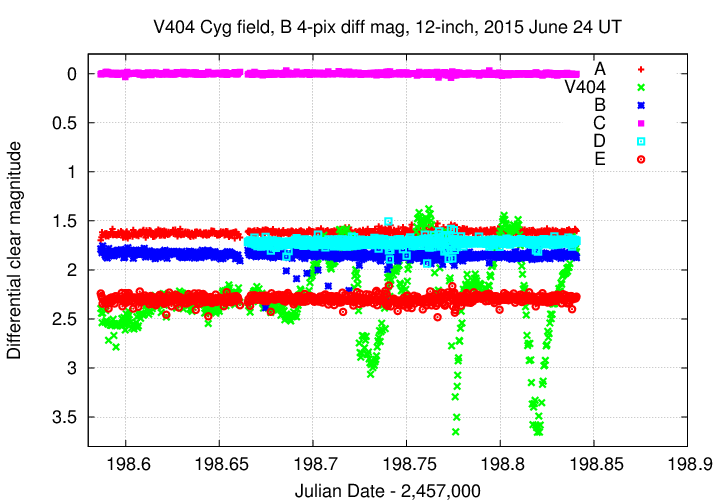
Here's a closeup of V404 Cyg by itself. Note that it was nearly constant early, but then entered into a series of violent dips-and-rises.
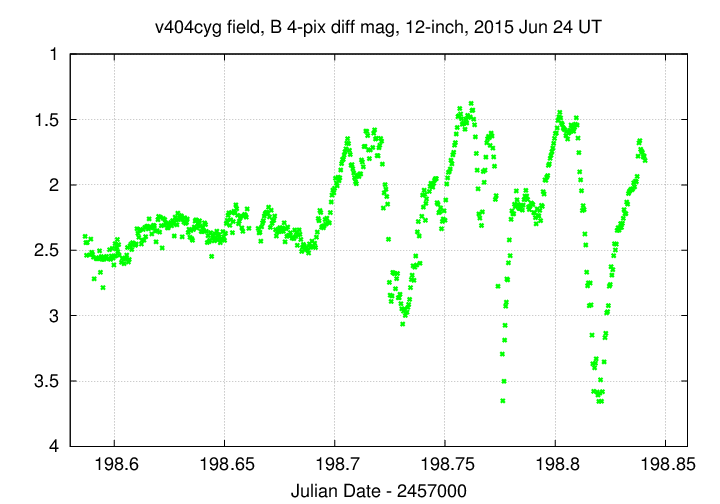
I used the AAVSO's value for the B-band magnitude of star "F" = UCAC4 620-101865 to shift the ensemble magnitudes to the standard B-band scale. You can download my measurements below. A copy of the header of the file is shown to explain the format.
# Measurements of V404_Cyg made at RIT Obs, Jun 25, 2015 UT, # in fair to mediocre conditions, # by Michael Richmond, using 12-inch Meade and SBIG ST-9E CCD. # Exposures 20 seconds long, B filter. # Tabulated times are midexposure (FITS header time - half exposure length) # and accurate only to +/- 1 second (??). # 'mag' is a differential magnitude based on ensemble photometry # using a circular aperture of radius 7.4 arcseconds. # which has been shifted so UCAC4 620-101865 has mag=13.499 # which is its V-band mag according to AAVSO chart 15094IVF. # # UT_day JD HJD mag uncert Jun25.07743 2457198.57743 2457198.57989 13.603 0.039 Jun25.07769 2457198.57769 2457198.58015 13.638 0.040 Jun25.07931 2457198.57931 2457198.58177 13.690 0.040
Last modified 6/25/2015 by MWR.